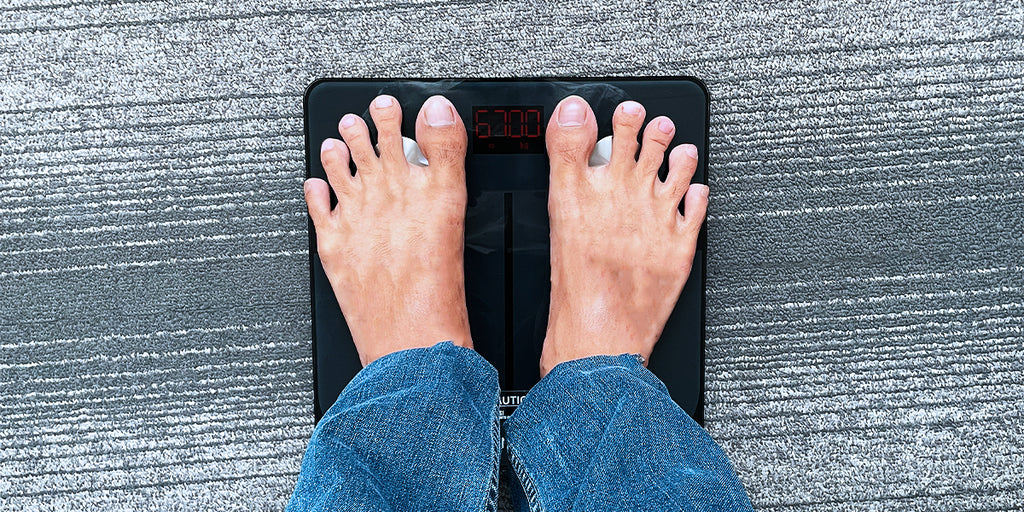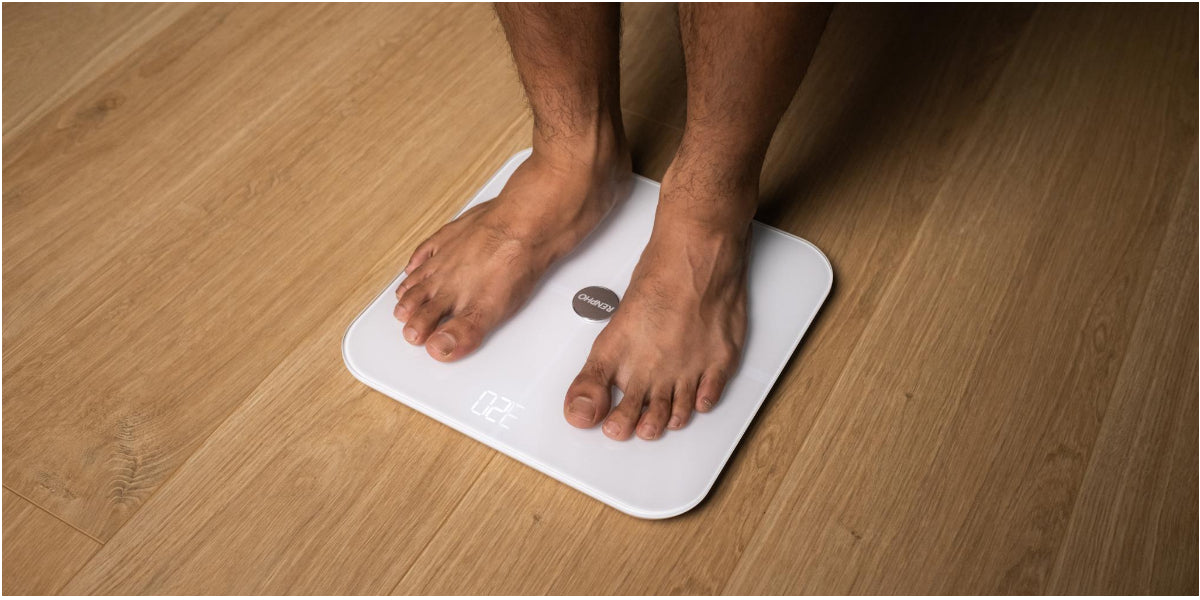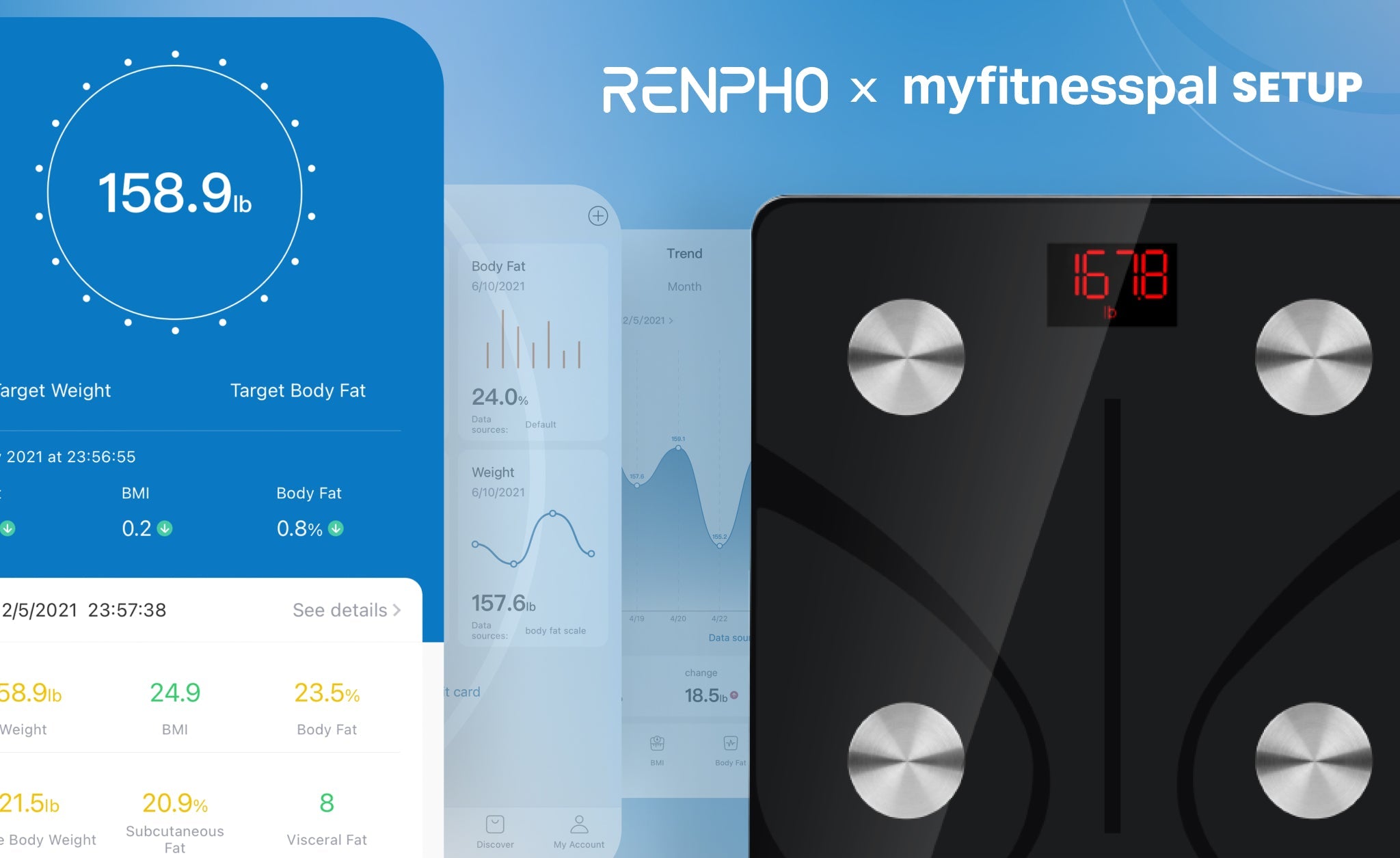How to Calibrate Your RENPHO Scale: A Step-by-Step Guide

Stay tuned to our latest news
Article last updated June 24, 2025
RENPHO’s Smart Body Scales, such as the Elis 1 and Elis Aspire Smart Body Scales, are innovative technologies with features meticulously designed to help you reach your health and fitness goals more efficiently.
By using any of our smart scale models, you can keep track of 13 body composition metrics, from body weight, skeletal muscle and bone mass to visceral fat to muscle mass, body water and body fat percentage. You gain insights and trends over time about your overall health and fitness.
Our smart scales combine the power of Bioelectrical Impedance Analysis (BIA) technology with key factors such as your age and height for more accurate readings. To ensure consistency in results, your device may need to undergo a recalibration process based on the frequency of use and the precision level.
Read on to know how to calibrate your RENPHO scale. We will walk you through the process of calibrating your device to maintain reliable data for your health and fitness journey.
What is Scale Calibration?
Before we dive into the calibration process, let's understand what calibration is and when it is necessary for your digital bathroom scales.
Calibration in general helps ensure that the internal settings of your digital scales are working correctly to provide accurate measurements. Calibrating your RENPHO scale not only helps maintain its accuracy but also enhances your overall experience.
Calibration, coupled with proper usage, is vital to maintaining the reliability of your device and aiding you in effectively hitting your goals.
Why Calibrate Your Scales Regularly?
Regularly calibrating your scale is crucial for ensuring the accuracy of your measurements essential for when you're taking your weight or doing a body composition analysis. Over time, scales can become miscalibrated due to normal wear and tear, environmental factors, or handling, and without calibration, the scale may not be providing truly accurate readings. This is a critical issue, as inaccurate scale measurements can lead to major problems in many applications, such as over or under-dosing of medications, incorrect ingredient amounts in manufacturing, or discrepancies in commercial transactions.
Regular calibration also helps maintain compliance with industry regulations, which often require scales to be calibrated at specific intervals. Beyond just meeting regulatory requirements, calibration allows you to detect if the scale is gradually drifting out of alignment over time, so you can catch and correct any issues before the scale becomes significantly miscalibrated. This consistency in measurements is particularly important for processes that rely on precise, repeatable data, like scientific research or quality control.
Properly calibrating your scale on the schedule recommended by the manufacturer can also help extend the overall lifespan of the equipment by identifying and correcting problems early. With regular calibration, you can have confidence that your scale is providing accurate, reliable measurements, protecting the integrity of your processes and helping you avoid potentially costly mistakes. The time and effort spent on routine calibration is well worth it to ensure your scale remains in optimal working condition.
When to Calibrate Your Scales?
We recommend that you calibrate your scale if:
- Your body scale has been turned upside down
- It is moved to a different location. This is advisable to account for any environmental changes.
- You suspect that you are getting inaccurate measurements
- After cleaning or performing any maintenance on your scale
- RENPHO's suggestion on how often the scales should be calibrated for optimal performance
What to Do Before Calibrating Your Scales?
Before initiating the calibration process, it is important to first clean the platform and housing to remove any dust, dirt, or debris that could affect the calibration.
Next, you'll want to check that the scale is perfectly level using a bubble level or the adjustable feet, as an unlevel scale can throw off the calibration. It's also a good idea to turn on the scale and let it warm up for the recommended time, often 5-15 minutes, to allow the internal components to stabilize and reach their operating temperature.
When it comes time to calibrate, be sure to use certified, traceable calibration weights that match the scale's capacity, as using uncertified weights can result in an inaccurate calibration. Finally, be sure to follow the manufacturer's instructions closely for the proper calibration procedure, and perform multiple calibration checks to verify consistency and ensure the scale is properly calibrated.
Step-by-Step Guide on How to Recalibrate a RENPHO Smart Body Scale
Step 1: Start by placing the scale on a clean, level, and stable location.
Placing your scale on a flat surface as opposed to uneven flooring helps prevent any inconsistencies during the calibration process and subsequent measurements.
Step 2: Place one foot on the scale to power on the device.
Turn on the RENPHO scale and allow it a few moments to stabilize for optimized calibration process. Wait for the LED screen to light up.
Step 3: Step off the scale once it is on.
This signals the start of the calibration process.
Step 4: Wait for the display to read “CRL” or “0.00.” If not, repeat steps 2-3.
The display “0.00” indicates that the calibration process is finished. You can start using the device for your usual measurements.
Step 5: Weigh yourself properly.
During the measurement, keep your weight centered directly above and over the scale as much as possible.
Step 6: View your results on the RENPHO Health App.
Wait for the scale to shut off automatically (about 10 seconds). Then, view the results on your RENPHO Health App account.
Keep Your User Manual
We highly recommend that you familiarize yourself with the user manual provided by RENPHO, as it contains specific instructions and guidance for your particular model.
After calibrating your RENPHO scale, if you still encounter inaccurate results, it might be because of internal error. You may resolve this by resetting your scale. To do this, take one battery out for 5 seconds and put it back in.
Calibrate your device, as needed, and enjoy the benefits of precise measurements on your path to a healthier lifestyle!
Weight Fluctuation
It is important to remember that our weight fluctuates throughout the day. Your weight may fluctuate between 2 and 4 pounds daily as the water inside your body shifts. Additionally, your food and water intake could cause some weight fluctuation.
How to Maintain Your Digital Scale?

To ensure your scale continues to operate at an optimum level, it's essential to maintain your RENPHO scale properly. Here are a few tips to help you keep your scale in optimal condition:
Regular cleaning: Clean your scale regularly using a soft, damp cloth. Avoid using harsh chemicals or abrasive materials that may damage the surface of the scale.
Handle with care: When moving or transporting your scale, handle it with care to prevent any impact or shock that could affect the operation of your smart scale.
Check for wear or damage: Routinely inspect your scale for any signs of wear, damage, or loose components.
Conclusion
Designed to provide you with your health metrics, smart body fat scales are important tools to help you reach your health goals. It is, thus, vital to ensure that they’re operating at its optimum level.
Calibrating your RENPHO scale is a crucial step in maintaining accurate measurements for your health and fitness tracking. Follow the step-by-step guide outlined in this article to see reliable body composition measurements.
Remember, if you encounter any issues during the calibration process or have concerns about the accuracy of your RENPHO scale, don't hesitate to consult the user manual or reach out to RENPHO's customer support.
Know more about our Smart Body Scale collection today!- https://www.medicalnewstoday.com/articles/320603
RENPHO Health Tips
-

5 Ways to Use Food Scales for Healthy Weight Loss
June 5, 2023
Read more >
-

How to Use Your Smart Scale's Multiple Users Feature
May 31, 2023
Read more >
-

Maximizing Your Smart Body Scale: 5 Tips for Best Results
May 23, 2023
Read more >
-

RENPHO Smart Body Scale: Connecting Your RENPHO Health Data to the MyFitnessPal App
December 20, 2021
Read more >
-

How the RENPHO Smart Body Scale Works with Your Biometrics
April 3, 2022
Read more >





